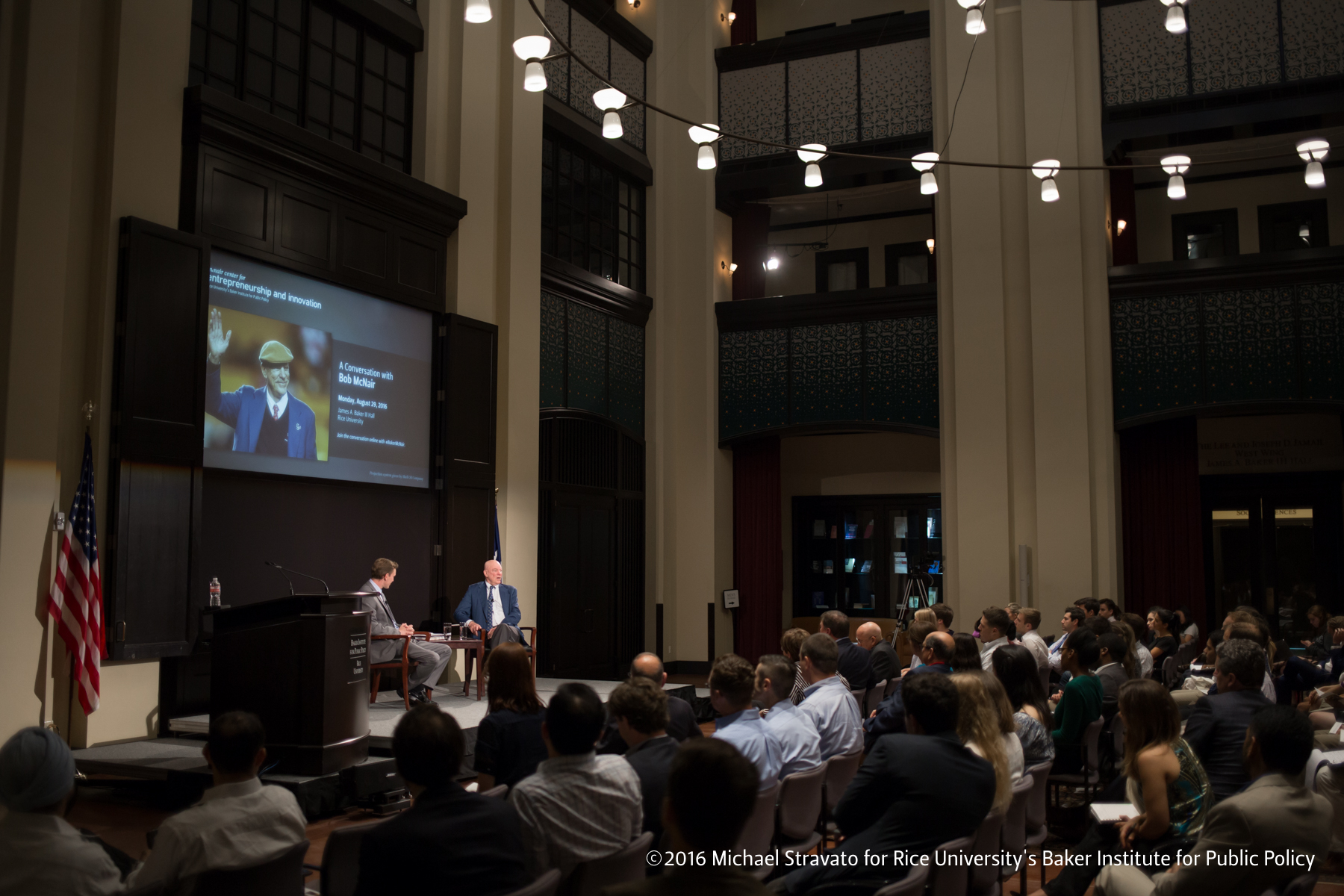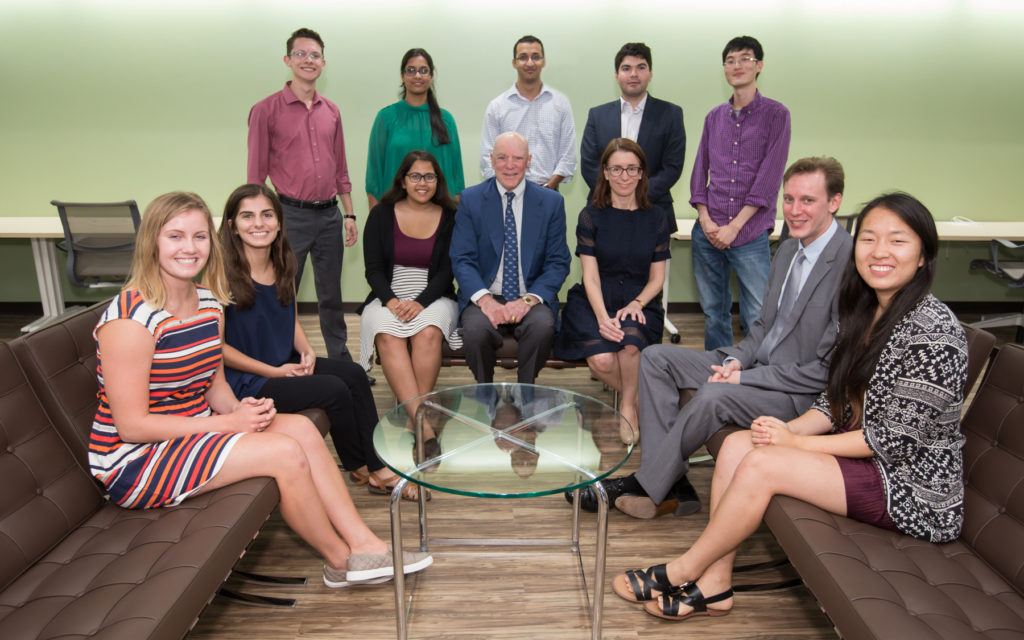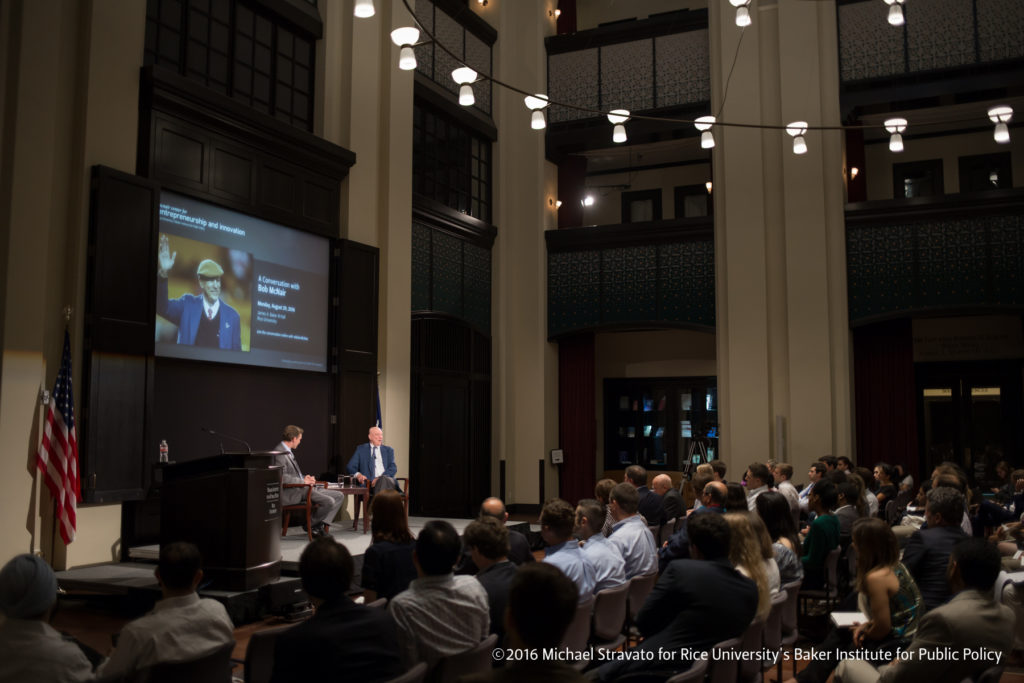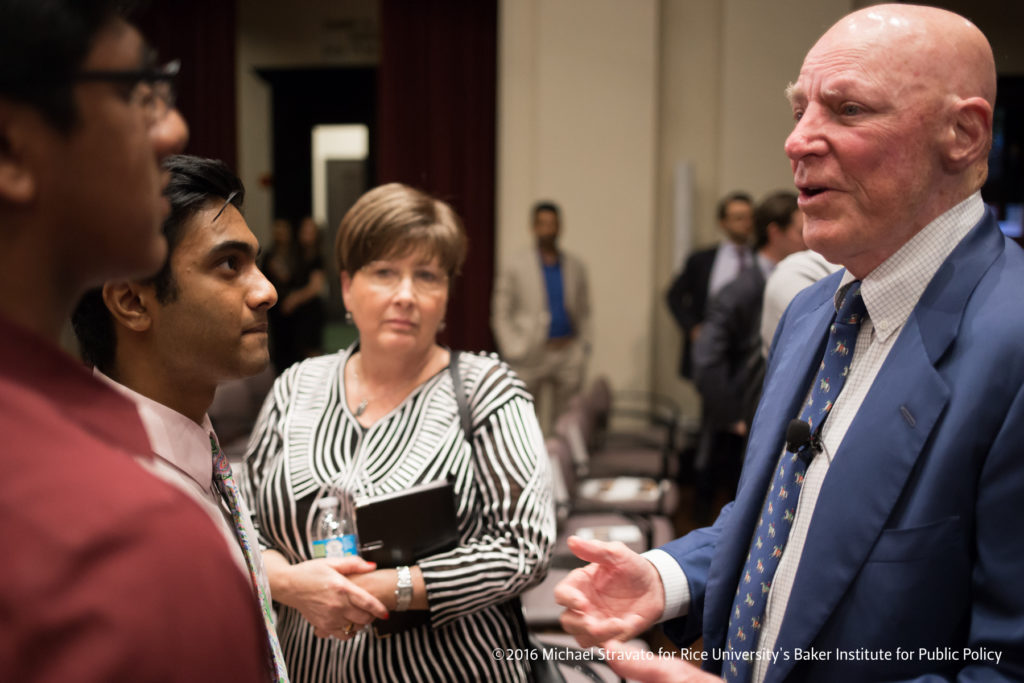Weekly Roundup is a McNair Center series compiling and summarizing the week’s most important Entrepreneurship and Innovation news.
Here is what you need to know about entrepreneurship this week:
Elaine Pofeldt, Contributor, CNBC.com
CNBC Contributor Elain Pofeldt observes that the United States and Europe are witnessing a rise in nationalist and anti-globalization sentiment. She cites Mr. Trump’s election and the Brexit referendum as evidence. The trend may reflect a global desire to redistribute market and government benefits domestically – and a disapproval of corporations that send wages abroad and profits to the already wealthy.
In this uncertain climate, one economic principle remains key: Entrepreneurship fosters economic growth.
The Kauffman Foundation’s recently released Global Entrepreneurship Index emphasizes the importance of entrepreneurship to economic growth. This annual index rates countries on the health and quality of their entrepreneurial ecosystems. There is a strong correlation between a country’s GDP and its technological advancements. Governments should support a strong entrepreneurial ecosystem if they are truly serious about encouraging the country’s economic growth.
Currently the U.S. ranks number one on the index. The index suggests that the strength of the U.S. entrepreneurial environment lies in a strong perception for opportunity. One area of opportunity that U.S. entrepreneurs are increasingly tapping into are the regulated sectors, such as health care, energy and education.
Social entrepreneurs is also on the rise. Jonathan Ortmans, a senior fellow at the Kauffman Foundation, notes how this relates to national policy: “We’re now seeing a much larger number of public-sector leaders — government at the national and local level — jumping in and asking, `How do we tackle this and build stronger entrepreneurial ecosystems?'”
Margarita Hakobyan, Contributor, Huffington Post
Huffington Post’s Hakobyan emphasizes the role of entrepreneurship in job creation and economic growth. According to a report released by the Small Business Administration in 2012, small businesses created 60 percent of new jobs in the previous decade.
New businesses challenge existing markets and encourage competition by offering new or improved products. Successful entrants often steer customers away from existing companies. Disruptions in the market consequently force existing companies to innovate or watch their market share diminish.
Although the manufacturing sector suffered job losses from advancements in automation and other technologies, its productivity and scale have both risen considerably.
Manufacturing is an exception – many market disruptions create jobs. For example, Netflix, dismantled the video rental industry but created jobs by feeding a demand for large-scale processing of DVDs and maintenance of the grocery store kiosks that sell these DVDs.
Small businesses can also contribute to economic growth through their flexibility and diversity. Flexibility allows startups to react quickly to market conditions. Startups can meet consumer demands faster than established corporations because large companies often must follow long administrative processes before implementing reforms.
Michael J. de la Merced, Reporter, New York Times
The Times’ Merced reports on venture capital firm, Spark Capital. The firm is known for early investment in promising startups like Twitter, Tumblr, Slack and Oculus.
Spark is also wading into uncertain industries. It recently invested in Cruise Automation, a San Francisco-based startup that develops software for self-driving cars. At a time when Google and Uber declared self-driving vehicles “among their top research priorities,” the success of less funded and less established startups competing to break into the same market seemed doubtful. Big industry players already dominated the research on self-automated cars, so most VC firms turned to alternative ventures within less-explored markets. Despite the industry’s conventional wisdom, Cruise Automation was sold to General Motors for $1 billion within months.
Spark adopts a nontraditional process for investment decisions that focuses on products rather than markets. Instead of specializing in certain industries or markets, partners at Spark can bring any prospective venture to the table. Investors then debate the merits of pursuing the opportunity until a consensus among the partners is reached. Spark accredits its most successful decisions to an “appreciation for good product design.”
In total, Spark manages $3 billion in investment funds. Its fifth venture fund will have a first-close target of $400 million.
Stacy Cowley, Reporter, The New York Times
Indiegogo is a popular crowdfunding site that enables small venture capitalists to invest personal money into promising and creative ventures. The major crowdfunding site is the first to take advantage of a new securities rule, which allows “ordinary investors to risk up to a few thousands dollars a year backing private companies.”
Before the rule was passed, only accredited investors, or those with an annual income greater than $200,000 or net worth of $1 million, could invest personal funds in these riskier ventures. With the passage of the new rule, crowdfunding backers can own equity stakes in the companies they invest in.
The new rule addresses an issue raised during Oculus’ acquisition by Facebook. Oculus raised millions of dollars on crowdfunding sites during its early investment stages. The startup used the investments raised by crowdfunding backers to prove to venture capitalists that there was a market demand for its products. Investors poured money into the company, and Facebook subsequently acquired Oculus. The firm’s original crowdfunding backers reaped no gains; angel and venture capital investors took home the profits.
Anil Gupta and Haiyan Wang, Contributors, Harvard Business Review
The Boston-Cambridge and Bay Area have histories in technology entrepreneurship and venture capital (VC). However, since the 1990s, Silicon Valley has consistently snatched a larger share of all VC investments in the US than its Northeastern counterpart. New England’s share in VC investments plateaued at roughly 10 percent. Meanwhile, the Bay Area’s share of VC investments has grown from 22.6 percent to just over 50 percent.
HBR’s Gupta and Wang identify cultural factors and state-level policies as possible explanations for the divergence between the two coastal VC hubs. For example, Massachusetts, unlike California, allows businesses to include noncompete covenants in their employment contracts. Noncompete covenants offer company loyalty, but they can also remove the need for fast-paced innovation that many Silicon Valley entrepreneurs face.
Additionally, New England and Silicon Valley differ in the type of investors and companies that they attract. The Northeast dominates in the life sciences; in the first three quarters of 2016, 60 percent of New England investments involved ventures focused on biotechnology and medical devices. Silicon Valley, on the other hand, is home to many of the startups that develop platform technologies integral to the digital age.
According to Gupta and Wang, California’s stronghold on the digital and tech industry has resulted in a “growing agglomeration effect.” Increasingly, entrepreneurs are migrating to or launching their businesses in the Bay Area to gain access to these synergies that come from being immersed in the world’s greatest entrepreneurship ecosystem.
And in startup news…
Tomio Geron, Reporter, The Wall Street Journal
San Francisco-based Womply raised $30 million in its most recent round of financing, bringing its funding total up to $50 million since 2011.
The startup’s platform offers a “web-based suite of software tools” that allows small businesses to analyze performance data on sales, marketing, consumer behavior, revenue and online reputation.
Womply serves a diverse set of clients, ranging from salons to legal firms, but focuses on supporting service-oriented small business. The startup allows small businesses to gain valuable insights into their performance and consumer base. President Cory Capoccia says Womply is helping small businesses increase their efficacy “by “building technology to help grow, protect and simplify running small businesses.”
Rice Entrepreneurs
Carlin Cherry, Research Assistant, McNair Center for Entrepreneurship and Innovation
East-West Tea is a student-run business that sells boba tea to Rice University students. Initially developed as a project for an undergraduate marketing class, East-West launched operations last month. The McNair Center’s Carlin Cherry interviews operations manager Andrew Maust.










 On December 1, 2016, the Labor Department will officially institute new regulations on overtime eligibility for workers. Announced on May 17, the
On December 1, 2016, the Labor Department will officially institute new regulations on overtime eligibility for workers. Announced on May 17, the 
 4.1% each.
4.1% each.


